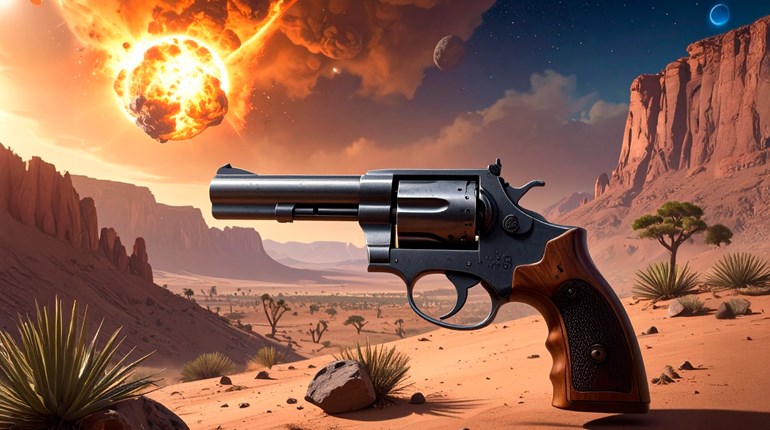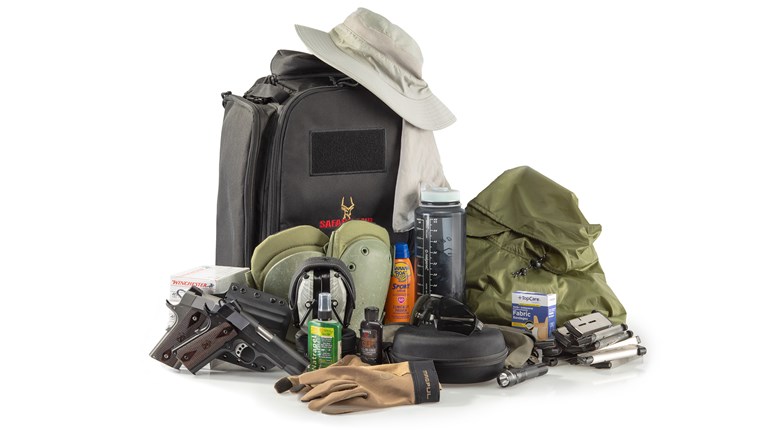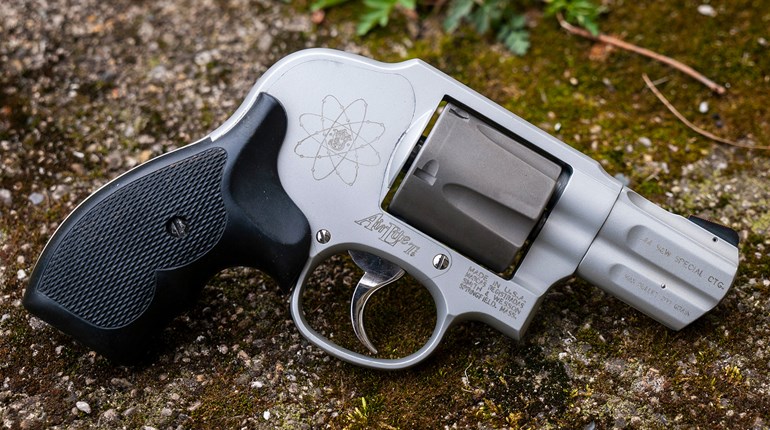
The FN 510 (above, left) and the Palmetto State Armory 5.7 Rock are two pistols in relatively esoteric chamberings, each of which has attracted a set of enthusiasts.
It occurred to me the other day that a younger Millennial or a Zoomer (or anyone who’s only been into guns for a few years), provided they hang out in the more clueful corners of the Gunternet, has no memory of The Great Caliber Wars.
Anyway, for the most part the caliber wars are over and 9 mm won. Sure, there are a few holdouts at gun counters or 1911 fan forums here and there, like diehard Japanese soldiers in the jungles of some forgotten atoll in the 1970s, but 9 mm has all but conquered the duty and personal-defense semi-automatic pistol markets.
This is all based on the fact that, as the saying goes, “Nine is Fine.” It’s not the ultimate pistol cartridge, it’s simply good enough—and it’s plentiful (thanks in part to its being a NATO standard), easy to shoot and inexpensive for a centerfire handgun round. Before the ammunition market went bonkers in the Plague Year of 2020, I even knew people who were referring to it as “The New .22” due to how common and inexpensive it had become.
Back when I first started taking a lot of pistol classes, you’d see as much as half the class using .45 ACP or .40 S&W pistols. Heck, I was one of them. I ran a .45 1911 in my first classes with Louis Awerbuck and Todd Green, may they rest in peace.
Nowadays? It’s almost a surprise when someone shows up with either; especially .40 S&W, since you’ll occasionally get a 1911 fan and they’ll likely as not be shooting .45 ACP, but as Taurus USA Marketing Manager Caleb Giddings quipped on social media the other day, .40 S&W has become like .38 Super: Almost exclusively the province of USPSA Limited shooters.
But, Americans are nothing if not individualistic. When something becomes too common, we tend to get itchy and look around for a way to differentiate ourselves from the herd.
Fortunately for the iconoclasts among us, there are two blossoming trends that offer a bit of distinction from the rest of the crowd on the firing line—or at least make your own brass easier to spot when it comes time to police up the range at the end of class.
First is the resurgence of the 10 mm cartridge. For a long time, it felt like only Glock was keeping the 10 mm faith, with its compact and full-size offerings. Venerable Smith & Wesson floated the Model 610 in and out of production, mostly to satisfy wheelgun gamers and the occasional hunter who wanted to try something different from the typical .357 or .41 Mag. in the woods.
As a result, the ammunition choices for 10 mm tended toward the hunting variety, with high-speed loads offering heavy bullets and recoil to match. The jacketed-hollowpoint offerings in the chambering tended to be holdovers from the last millennium with older-tech projectiles, like Winchester’s Silvertip, Federal’s Hydra-Shok and Hornady’s XTP. These would no doubt work, especially at 10 mm velocities, but they weren’t exactly cutting edge, “barrier-blind” bullets.
The recent resurgence of 10 mm pistols like the M&P 10 from Smith & Wesson and FN America’s FN 510 has, however, driven the introduction of viable new personal-defense loads in the “Big 10.” You can now get modern designs engineered to work specifically at 10 mm speeds, not reloaded .40 S&W bullets with an extra 50 or a 100 fps tacked on to the muzzle velocity. In addition to the 175-grain Hornady Critical Duty, there are 200-grain offerings in Federal HST and Speer Gold Dot flavors. If you want to carry in the “Best Millimeter” as its fans call it, these are excellent choices.
Another cartridge seeing a big comeback from relative obscurity lately is the 5.7x28 mm, developed by FN initially as a cartridge for submachine gun-type personal defense weapons (PDW) to meet a NATO specification. The cartridge had languished because of two reasons. For starters, the only firearms chambered for it were FN’s PS90 carbine, which was a semi-automatic derivative of the original NATO-spec PDW, and its handgun companion, the Five-seveN. Other than the occasional AR upper, that was pretty much it for 5.7-chambered firearms.
Now those offerings have been joined by handgun offerings from Ruger, Palmetto State Armory and Smith & Wesson, as well as a handy little Ruger carbine that’s a partner for its pistol, and both a carbine and large-format handgun from KelTec that use 50-round PS90 sticks.
While the FN and Ruger offerings are on the large side for CCW, they aren’t any more of a challenge in the role than, say, a Glock G21 or a full-size Staccato. The M&P, actually, borders on svelte and would be not hard to conceal at all.
The other reason the cartridge had lagged in popularity was the fact that the commercially available cartridges were uninspiring in terminal ballistics. The original NATO-spec stuff was verboten stateside for private citizens due to the steel-penetrator insert. The most commonly available SS195LF round had eye-watering muzzle velocities, even from handguns, but being an ultralight 28-grain spitzer bullet, it would yaw rapidly on impact, which caused unpredictable effects on the wound track in the target and also bled off velocity, limiting penetration to 10 inches or so in gelatin—about the same as mediocre expanded .380 ACP JHP.
Nowadays, though, incentivized by the newfound popularity of the round, there are rounds that appear more viable for the personal-defense role. I’ve seen good results in gel from the SS197SR, which is loaded with the 40-grain Hornady V-Max and is steaming along pretty well, even out of handgun-length tubes. There’s also a 40-grain Gold Dot hollow-point load from Speer designed explicitly for personal defense, and hopefully more offerings to come, given the increased number of 5.7-chambered firearms out there.
At the end of the day, nine is still fine, but not everybody wants to run with the pack. To be a caliber iconoclast, you now have a couple more viable options to be different from yet another Glock G19 shooter.



































